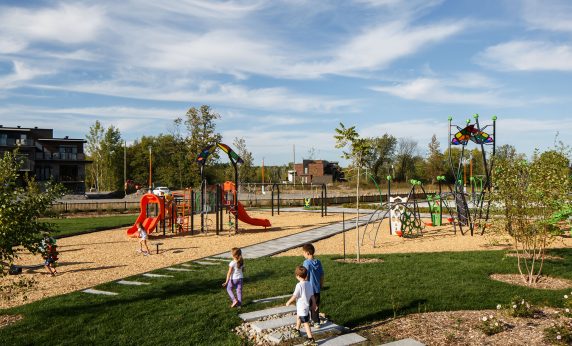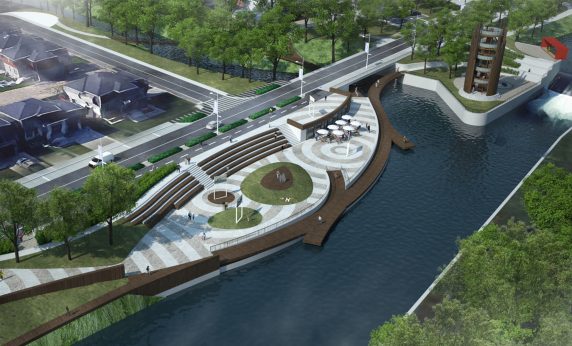- Urban Planning
- Strategies
- Public Participation

Comprehensive transportation corridor analysis to enable L’Assomption to reduce motorized travel and greenhouse gas emissions.
Sustainable actions
Health and well-being

Combating heat islands
Improving air quality
Promoting an active lifestyle
Human-scale neighbourhoods
Reducing commuting times
Reduced environmental footprint

Public transport
Urban densification
Motorized computing reduction
Critical mass for community services
Resilience and adaptation to climate change

Active and public transport
Densification and mixed use
Adapting to climate change
Land use planning has a direct impact on travel habits. Therefore, the project constituted a major input to the revision of the MRC’s revised land use and development plan (SADR) in terms of urbanization management and integrated transportation infrastructure planning.
Given that some of the current SADR’s principles have not led to expected results, the MRC wanted to further its reflection to concentrate demographic and economic growth within key transport corridors. This objective seems to be conducive to sustainable mobility that contributes to the reduction of greenhouse gas emissions and the fight against climate change. Furthermore, the stakeholders also needed to consider the implementation of the MRC’s Economic Development Strategy to link development and mobility interventions in a coherent way.
The project was carried out in accordance with the six-step methodological framework defined in the Vivre en Ville (2019) guide “Planifier pour le climat : intégrer la réduction des émissions de gaz à effet de serre des transports à la planification en aménagement et urbanisme” (“Planning for the climate: integrating greenhouse gas emission reductions from transport into urban and regional planning”):
- Assess the community’s carbon footprint by analyzing its various living environments;
- Assess the needs related to demographic and economic trends, particularly in the context of the implementation of the Economic Development Strategy;
- Analyze the potential for housing and economic activities according to the regulations in force and the existing constraints of environments with a satisfactory carbon balance and those with good reduction potential;
- Develop scenarios for the consolidation or requalification of urban spaces for residential and economic purposes according to the assessed trends;
- Develop sustainable mobility and carbon footprint monitoring indicators for the community;
- Develop rules and criteria for sustainable development and urban planning for integration into regional and local planning and development tools.
Workshops were held with metropolitan, regional, and local authorities in the fields of planning, mobility, and economic development. This resulted in important findings that require the methodology to be adapted to better reflect local realities and the use of data on a regional scale.
The project suggests a vision statement and development principles based on two levels of intervention, inspired by TOD (transit-oriented development) and compact city concepts.
Data sheet
- Client
- MRC de l’Assomption
- Location
- L’Assomption
Expertise
- Urban Planning
- Strategies
- Public Participation
Services provided
- Sustainable Development
- Planning and regulation
- Impact studies
- Acceptance and public consultation
Collaboration
- CIMA +




